FAQ - Advanced Bathroom Queries
Do Plumbers Recommend Flushable Wipes

You might be wondering: do plumbers really endorse the use of flushable wipes? The response could catch you off guard.
In this article, we’ll delve into the flushability debate and explore the impact of these wipes on plumbing systems. We’ll also provide insights from the experts themselves – plumbers who have seen the common issues that arise.
So, if you’re looking for alternative solutions or best practices for flushing wipes, keep reading. We have the authoritative information you need to make an informed decision.
Key Takeaways
- Flushable wipes are labeled as ‘flushable’ but can still cause plumbing issues if not disposed of properly.
- There are concerns about the environmental impact and potential damage caused by flushable wipes.
- Flushable wipes can lead to plumbing clogs, damage to pipes, and disruption of septic systems.
- Alternatives such as easily dissolvable toilet paper, bidets, and reusable cloth wipes are recommended over flushable wipes.
Understanding Flushable Wipes: What Are They
We often wonder what exactly flushable wipes are and how they differ from regular toilet paper.
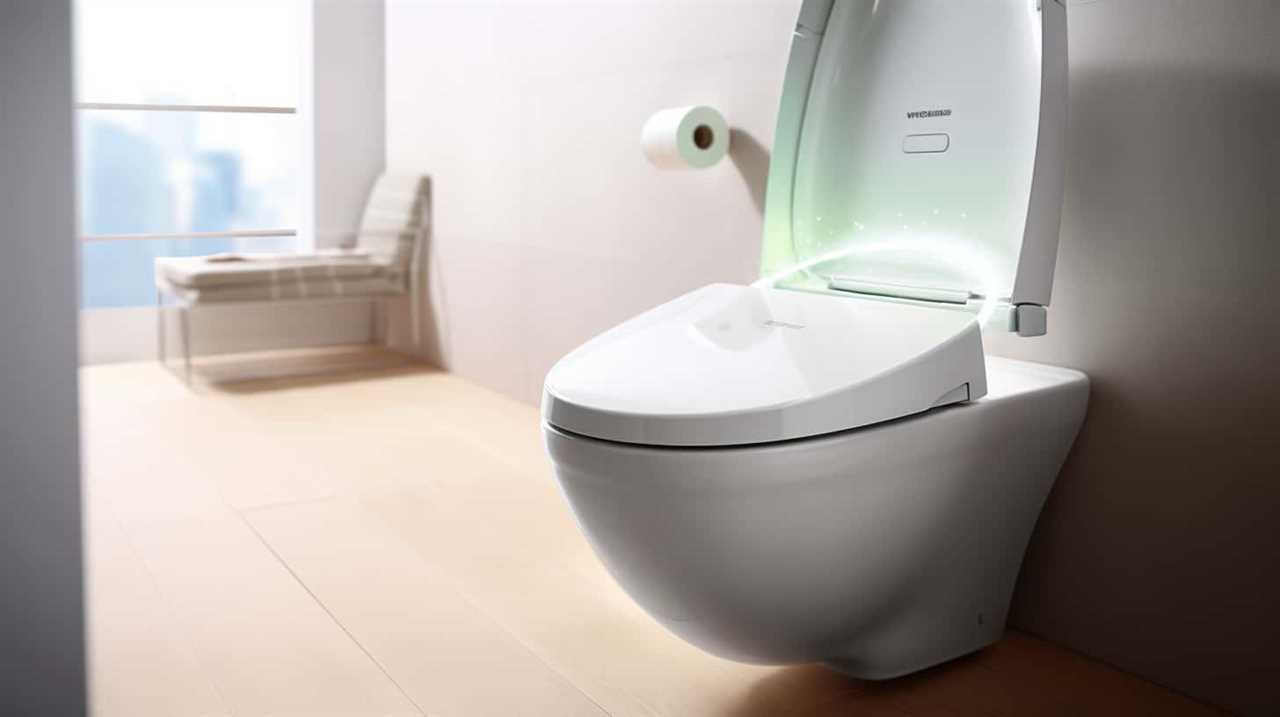
Flushable wipes are moistened towelettes that are designed to be flushed down the toilet after use. They’re made from a combination of natural and synthetic materials, including cellulose fibers, rayon, and polyester. Some flushable wipes also contain ingredients like aloe vera or chamomile for added comfort.
Unlike regular toilet paper, flushable wipes are more durable and provide a better cleaning experience.
However, it’s important to note that even though they’re labeled as ‘flushable,’ they can still cause plumbing issues if not disposed of properly. To avoid clogging your pipes, it’s recommended to dispose of flushable wipes in the trash instead of flushing them.
The Flushability Debate: Are They Really Flushable
Let’s talk about the flushability debate surrounding flushable wipes.

While these wipes are marketed as being safe to flush, there are concerns about their environmental impact and potential to cause plumbing clogs and damage.
It’s important to consider alternatives to flushable wipes to avoid these issues and maintain the proper functioning of your plumbing system.
Environmental Impact of Wipes
When considering the environmental impact of wipes, it is important to examine the flushability debate: are they truly flushable? Many wipes on the market are labeled as "flushable," but the reality is that most of them do not break down in the same way as toilet paper. This discrepancy between product labeling and industry standards has led to a significant environmental issue. These wipes end up clogging sewage systems and causing damage to wastewater treatment facilities. The table below highlights the differences between toilet paper and flushable wipes in terms of their breakdown and impact on the environment.
| Toilet Paper | Flushable Wipes | |
|---|---|---|
| Breakdown | Quickly dissolves in water | Does not break down easily |
| Environmental Impact | Minimal impact on sewage systems and wastewater treatment facilities | Clogs sewage systems and causes damage to wastewater treatment facilities |
Understanding the environmental impact of flushable wipes is crucial in making informed choices about our personal hygiene practices. Transitioning into the next section about plumbing clogs and damage, it is essential to recognize the potential harm that these wipes can cause to our plumbing systems.
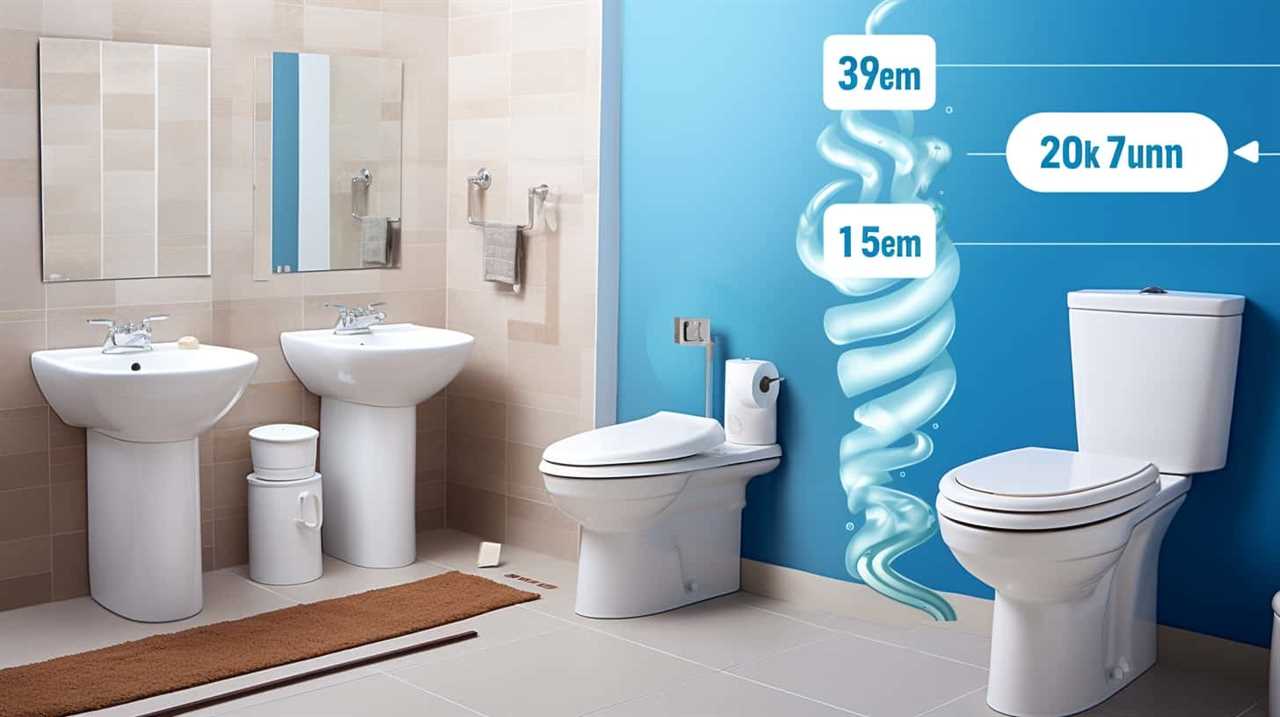
Plumbing Clogs and Damage
As plumbers, we don’t recommend flushable wipes due to the potential for plumbing clogs and damage. While these wipes are marketed as safe to flush, they can still cause serious issues in your plumbing system.
Here are four reasons why flushable wipes can lead to plumbing clogs and damage:
- Poor Dissolvability: Flushable wipes don’t break down as easily as toilet paper, leading to accumulation in the pipes and potential blockages.
- Clogging of Sewer Lines: When flushed, these wipes can get caught in the sewer lines, causing backups and costly repairs.
- Damage to Plumbing Fixtures: The fibers in flushable wipes can get tangled in the mechanisms of toilets and other plumbing fixtures, resulting in damage and malfunctions.
- Harm to Septic Systems: Flushable wipes can disrupt the delicate balance of bacteria in septic systems, leading to costly repairs or replacements.
Given these potential risks, it’s best to avoid using flushable wipes altogether and explore alternative options for personal hygiene.
Alternatives to Flushable Wipes
We recommend considering alternative options for personal hygiene instead of flushable wipes due to the ongoing debate regarding their flushability.

There are several eco-friendly alternatives to flushable wipes that can be just as effective.
One option is using toilet paper that’s specifically designed to break down easily in water. These types of toilet paper are often labeled as ‘septic-safe’ or ‘biodegradable.’
Another option is using a bidet or bidet attachment, which uses water to clean instead of wipes or toilet paper. Bidets aren’t only more environmentally friendly, but they also provide a more thorough cleaning.
Additionally, reusable cloth wipes can be used as an alternative to disposable flushable wipes. These can be washed and reused, reducing waste and environmental impact.

When considering flushable wipe alternatives, it’s important to choose options that are both effective and eco-friendly.
The Impact on Plumbing Systems: Do Flushable Wipes Cause Problems
Flushable wipes can cause problems in plumbing systems. Despite their claims of being ‘flushable,’ these wipes aren’t easily broken down like toilet paper and can lead to clogs and blockages in pipes. Here are four key reasons why flushable wipes can cause issues in plumbing systems:
- Non-disintegration: Unlike toilet paper, flushable wipes don’t disintegrate quickly in water. They can accumulate in the plumbing system, leading to blockages and backups.
- Build-up: Flushable wipes can accumulate with other debris, such as hair and grease, creating a solid mass that can obstruct the flow of wastewater.
- Sewer system strain: The presence of flushable wipes can put a strain on sewer systems, leading to costly repairs and maintenance.
- Environmental consequences: When flushable wipes clog pipes, they can cause sewage spills, which can contaminate water sources and harm aquatic life.
To maintain a healthy plumbing system and prevent costly repairs, it’s best to dispose of flushable wipes in the trash rather than flushing them.
Plumbers’ Perspective: Insights From the Experts
While there may be different opinions on the use of flushable wipes, plumbers consistently advise against their usage in plumbing systems. Based on our extensive experience in the field, we have encountered numerous plumbing issues directly related to the use of flushable wipes. These wipes may be marketed as safe for flushing, but they can actually cause serious damage and blockages in the pipes. To provide insight into plumbers’ experiences and debunk some customer misconceptions, we have compiled a table below showcasing common problems caused by flushable wipes in plumbing systems.

| Common Issues |
|---|
| Clogged Pipes |
| Sewage Backups |
| Pipe Damage |
| Expensive Repairs |
| Environmental Impact |
As we can see, the use of flushable wipes can lead to significant problems that can be costly and time-consuming to fix. In the next section, we will delve into the details of these common issues: blockages and clogs.
The Common Issues: Blockages and Clogs
Blockages and clogs are common issues that arise from the use of non-flushable wipes. These wipes can cause significant damage to plumbing systems, leading to costly repairs and inconveniences for homeowners.
To avoid these problems, it’s important to practice proper disposal practices and refrain from flushing any wipes, even those labeled as ‘flushable.’
Non-Flushable Wipe Consequences
As professional plumbers, we frequently encounter the consequences of using non-flushable wipes, which often lead to blockages and clogs. These wipes may seem convenient, but they can cause serious problems in your plumbing system. Here are the common issues that arise from using non-flushable wipes:
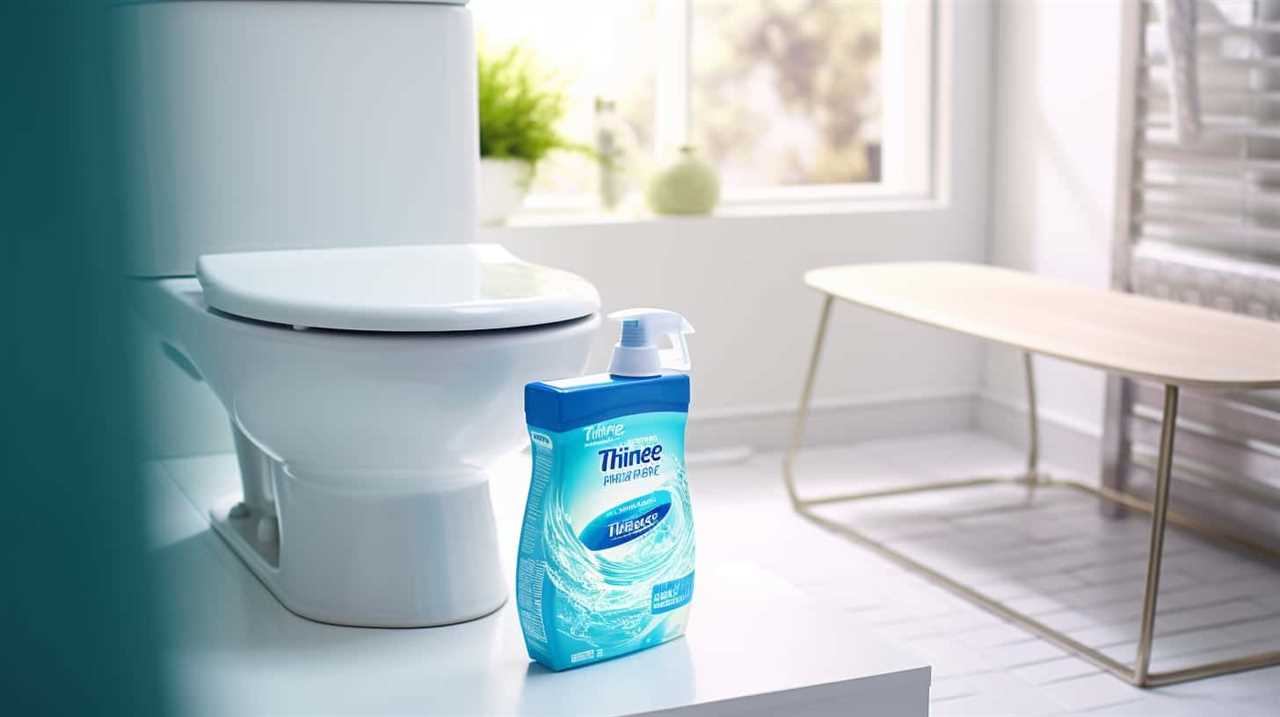
- Blockages: Non-flushable wipes don’t break down like toilet paper, causing them to accumulate and create blockages in your pipes. This can result in slow draining or complete backups.
- Clogs: When non-flushable wipes get stuck in your pipes, they can create clogs that prevent water flow. This can lead to overflowing toilets and drains.
- Expensive repairs: Clearing blockages and clogs caused by non-flushable wipes can be costly. You may need to hire a professional plumber to resolve the issue, which can be an inconvenience and financial burden.
- Environmental impact: Non-flushable wipes can also have negative effects on the environment. They can contribute to sewer system backups and pollute water sources.
To avoid these problems, it’s important to properly dispose of non-flushable wipes in the trash to prevent health risks and costly plumbing issues.
Plumbing System Vulnerabilities
What are the vulnerabilities in our plumbing system that lead to common issues like blockages and clogs? Proper plumbing system maintenance is crucial for preventing these problems.
Over time, various factors can contribute to blockages and clogs in our pipes. One common vulnerability is the accumulation of debris, such as hair, grease, and food particles, that can build up and obstruct the flow of water. Another vulnerability is the use of non-flushable items like wipes, which don’t break down easily and can cause significant blockages. Additionally, outdated or damaged plumbing systems may have weak points where clogs are more likely to occur.
To prevent these issues, regular maintenance, including periodic drain cleaning and inspections, is essential. By staying proactive and addressing potential vulnerabilities, we can minimize the risk of blockages and clogs in our plumbing systems.

Transitioning into the next section on proper disposal practices, let’s explore how we can dispose of items responsibly to further prevent plumbing issues.
Proper Disposal Practices
To prevent blockages and clogs in our plumbing system, we recommend using a few simple proper disposal methods and taking responsibility for how we dispose of items. By following these practices, we can proactively minimize the impact on sewer systems.
Here are four essential tips for proper disposal:
- Avoid flushing non-biodegradable items, such as wipes, tampons, or paper towels, as they can cause blockages in the pipes.
- Dispose of cooking grease and oil in a separate container, rather than pouring it down the drain, as it can solidify and lead to clogs.
- Use a drain strainer to catch hair and debris, preventing them from entering the plumbing system and causing blockages.
- Educate yourself and your household about what can and can’t be flushed down the toilet or washed down the sink to avoid any potential issues.
What Plumbers Encounter: Wipes in Sewer Systems
In our experience as plumbers, we often come across flushable wipes causing issues within sewer systems. Despite being marketed as ‘flushable,’ these wipes don’t break down like toilet paper does. Instead, they can accumulate and form clumps, leading to blockages in the sewer pipes.
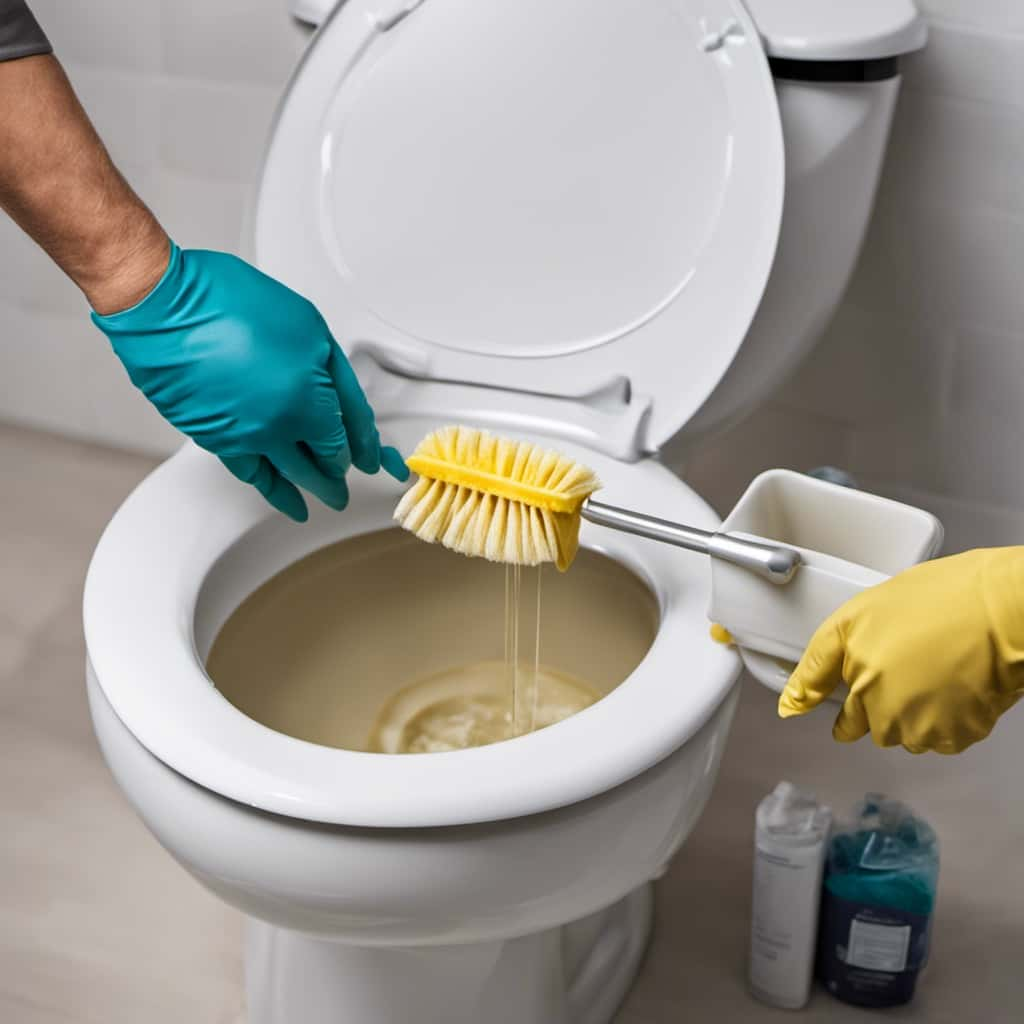
These blockages can cause backups, resulting in unpleasant odors, slow drains, and even sewage overflow in homes and businesses. The impact on sewer systems can be significant, requiring costly repairs and maintenance.
It’s important for homeowners to understand that flushable wipes shouldn’t be flushed down the toilet, as they can cause serious problems. Proper disposal in the trash can prevent these issues and help maintain the integrity of the sewer system.
The Costly Consequences: Repairs and Maintenance
When it comes to flushable wipes, the consequences can be costly.
Plumbers often encounter expensive plumbing repairs and regular maintenance costs due to these wipes being flushed down the toilet. These wipes can clog pipes, leading to blockages and backups that require professional intervention.

It’s important to understand the potential financial burden that comes with using flushable wipes and to consider alternative disposal methods to avoid these costly consequences.
Expensive Plumbing Repairs
Our experience as plumbers has shown that expensive plumbing repairs can often be the result of neglecting regular maintenance. To prevent costly repairs and maintain the health of your plumbing system, here are some cost-effective solutions:
- Routine inspections: Regularly inspect your plumbing system for leaks, cracks, or any signs of damage. Early detection can save you from expensive repairs in the long run.
- Proper maintenance: Follow recommended maintenance practices like flushing your water heater annually, cleaning your drains regularly, and avoiding the use of harsh chemicals that can damage pipes.
- Addressing small issues promptly: Don’t ignore minor plumbing problems like dripping faucets or running toilets. These seemingly insignificant issues can escalate into major repairs if left unattended.
- Hiring professional plumbers: While DIY solutions may seem cost-effective initially, hiring a professional plumber ensures that repairs are done correctly, preventing further damage and costly repairs down the line.
Regular Maintenance Costs
Regular maintenance costs for plumbing systems can add up over time. It’s important to stay on top of regular maintenance to prevent costly repairs down the line. Neglecting regular maintenance can lead to plumbing issues such as leaks, clogs, and pipe damage, all of which can have a significant impact on your finances. To give you an idea of the potential costs, here is a table outlining some common regular maintenance tasks and their estimated costs:
| Maintenance Task | Estimated Cost |
|---|---|
| Annual plumbing inspection | $100-$200 |
| Drain cleaning | $150-$300 |
| Water heater flush | $100-$150 |
| Pipe insulation | $200-$500 |
As you can see, regular maintenance costs can vary depending on the task. However, investing in regular maintenance can save you money in the long run by preventing major repairs. Now let’s explore another important aspect: the environmental factor and whether flushable wipes are eco-friendly.

The Environmental Factor: Are Flushable Wipes Eco-Friendly
We recommend considering the environmental impact of flushable wipes before using them. While they may seem convenient, it’s important to understand how they affect our ecosystems and sewer systems.
Here are four key points to consider:
- Eco-friendly alternatives: Opt for biodegradable toilet paper or reusable cloths instead of flushable wipes. These options have a lower environmental impact and are safer for our waterways.
- Impact on sewer systems: Flushable wipes don’t break down easily and can clog pipes and sewage systems. This leads to costly repairs and maintenance for homeowners and municipalities.
- Water pollution: When flushable wipes make their way into rivers and oceans, they contribute to water pollution. Marine life can mistake them for food and suffer from ingestion or entanglement.
- Wasteful manufacturing: The production of flushable wipes requires energy and resources. By choosing eco-friendly alternatives, we can reduce our carbon footprint and promote sustainability.
Considering these factors, it’s clear that flushable wipes aren’t as eco-friendly as they may claim to be. Making more sustainable choices will help protect our environment and preserve our sewer systems.
Manufacturer Claims Vs. Reality: Examining Product Labels
When it comes to evaluating the claims made by manufacturers, let’s take a closer look at what the labels on flushable wipes actually tell us. Many consumers are drawn to flushable wipes because they are marketed as a more effective and convenient alternative to regular toilet paper. However, it is important to understand that the term "flushable" does not necessarily mean that these wipes break down as easily as toilet paper. In fact, most flushable wipes do not disintegrate as quickly and can cause clogs in plumbing systems. It is crucial for consumers to be educated about the potential risks of using flushable wipes and to consider using regular toilet paper instead. Here is a comparison table to highlight the key differences between flushable wipes and regular toilet paper:

| Flushable Wipes | Regular Toilet Paper |
|---|---|
| Can cause plumbing clogs | Easily dissolves in water |
| May not disintegrate quickly | Breaks down rapidly |
| Can lead to costly repairs | Less likely to cause plumbing issues |
| Requires careful disposal | Can be safely flushed |
| Often more expensive | Affordable and widely available |
It is clear that there are significant differences between flushable wipes and regular toilet paper. Consumer education on flushable wipes is crucial to ensure proper usage and prevent plumbing problems.
Industry Regulations: What Standards Apply to Flushable Wipes
Moving forward into the topic of industry regulations for flushable wipes, let’s explore the standards that govern their labeling and composition.
When it comes to flushable wipes, there are specific industry regulations in place to ensure that these products are safe and effective for use. Here are four key standards that apply to flushable wipes:
- INDA/EDANA Flushability Guidelines: These guidelines outline the testing methods and criteria that flushable wipes must meet to be considered suitable for flushing.
- ASTM International Standards: ASTM D6400 and ASTM D6868 are two standards that determine the compostability and biodegradability of flushable wipes.
- Water Industry Specifications: Water industry organizations have developed their own specifications, such as the Water UK Fine to Flush standard, to evaluate the flushability of wipes and protect sewer systems.
- Labeling Requirements: Flushable wipes must comply with labeling regulations set by regulatory bodies, such as the Federal Trade Commission (FTC), to provide accurate information to consumers.
Alternative Solutions: What Do Plumbers Recommend Instead
To address the potential issues caused by flushable wipes, plumbers often recommend alternative solutions that are less likely to cause plumbing problems. When it comes to sustainable alternatives, plumbers have their preferred options. Below is a table that outlines these options:
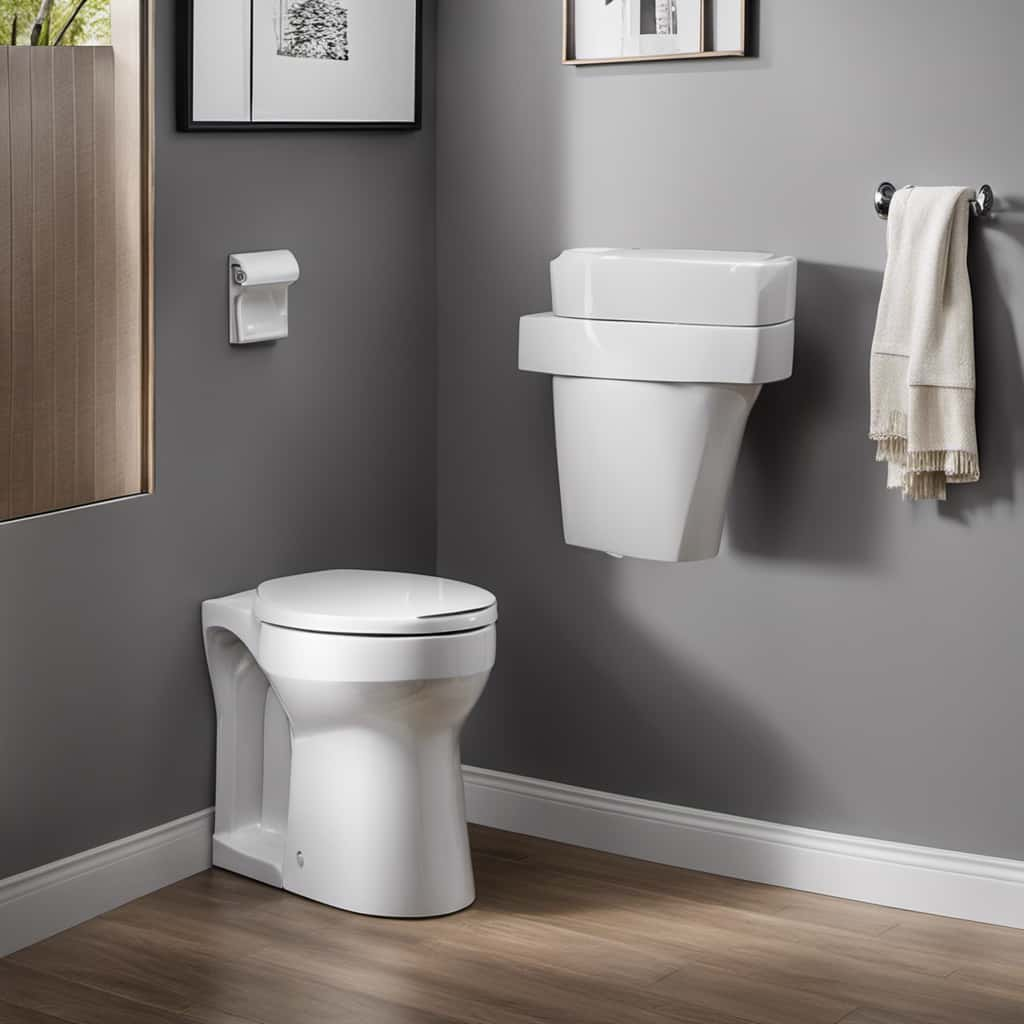
| Sustainable Alternatives | Plumbers’ Preferred Options |
|---|---|
| Biodegradable toilet paper | Traditional toilet paper |
| Bidets or bidet attachments | High-efficiency toilets |
| Paper towels (in emergency situations only) | Approved cleaning products |
Plumbers highly recommend using biodegradable toilet paper as it breaks down easily and is less likely to clog pipes. Bidets or bidet attachments are also a great option as they use water to clean, reducing the need for wipes altogether. In emergency situations where wipes are the only option, plumbers advise using paper towels instead. It’s important to note that the use of approved cleaning products is crucial to maintaining a healthy plumbing system. By following these recommendations, homeowners can avoid plumbing issues and contribute to a more sustainable environment.
Plumbers’ Tips: Best Practices for Flushing Wipes
Now let’s dive into some practical advice on flushing wipes, as plumbers have valuable tips to ensure the proper disposal of these products. Here are some best practices for maintaining your plumbing system when it comes to flushing wipes:
- Read the labels: Always check if the wipes are truly flushable before using them. Many wipes labeled as ‘flushable’ can still cause clogs in your pipes.
- Use sparingly: Limit your use of flushable wipes to minimize the risk of clogs. Remember, they aren’t meant to replace toilet paper.
- Dispose of properly: If possible, throw used wipes in the trash instead of flushing them. This reduces the strain on your plumbing system.
- Regular maintenance: Schedule regular inspections and maintenance with a professional plumber to ensure your pipes are in good condition and to address any potential issues before they become major problems.
Final Verdict: Should You Trust Flushable Wipes?
After considering the advice of plumbers and the potential risks of using flushable wipes, we’ve reached a final verdict on whether or not you should trust these products.
The flushable wipes controversy has brought consumer awareness to the forefront, leading to a more informed decision-making process. While flushable wipes may seem convenient and hygienic, it’s important to understand that they can cause serious plumbing issues.

Plumbers have consistently reported clogs and blockages caused by flushable wipes that don’t break down as advertised. Therefore, we can’t recommend trusting flushable wipes to be safely flushed down the toilet. It’s best to dispose of them in the trash to avoid potential damage to your plumbing system.
Keep in mind that proper disposal practices are crucial for maintaining a healthy plumbing system.
Conclusion
In conclusion, while flushable wipes may seem convenient, plumbers strongly recommend against using them. These supposedly ‘flushable’ products often lead to blockages and clogs in plumbing systems, causing costly repairs and inconvenience.
Plumbers advise using alternative solutions such as toilet paper or bidets, which are less likely to cause issues. Remember, when it comes to your plumbing, it’s always better to be safe than sorry.

Don’t let flushable wipes flush away your peace of mind!
With an impeccable eye for detail and a passion for bathroom-related, Ava leads our editorial team gracefully and precisely.
Under her guidance, Best Modern Toilet has flourished as the go-to resource for modern bathroom enthusiasts. In her free time, you might find Ava exploring antique shops and looking for vintage bathroom fixtures to add to her collection.
FAQ - Advanced Bathroom Queries
Are Toilet Paper Rolls Safe to Flush
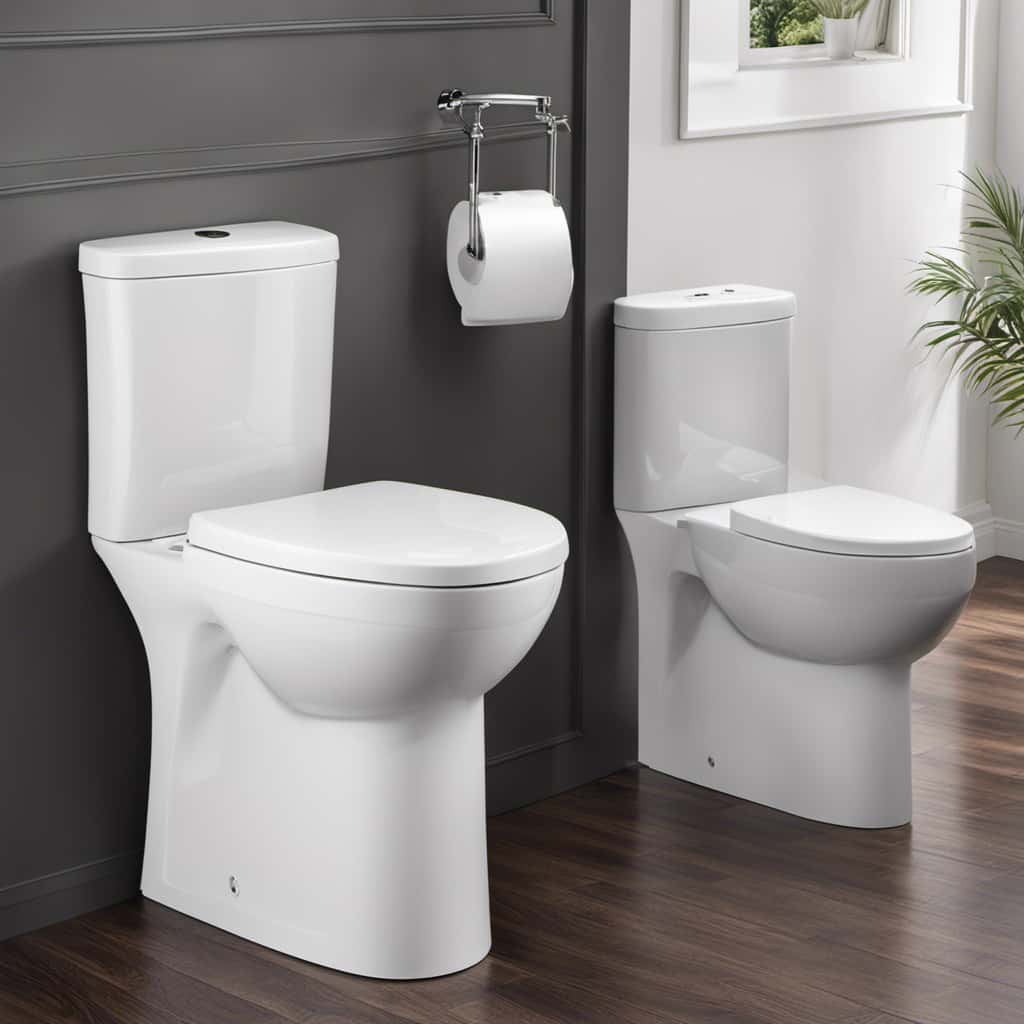
Did you realize that a staggering 27,000 trees are being cut down daily to make toilet paper? This is why it’s important for us to be conscious of our decisions when it comes to disposing of toilet paper rolls.
In this article, we will explore the environmental impact, plumbing risks, and alternative disposal methods associated with flushing these seemingly harmless rolls. By understanding the potential consequences, we can make informed decisions and contribute to a more sustainable future.
Let’s delve into the facts and find out if toilet paper rolls are truly safe to flush.
Key Takeaways
- Toilet paper rolls are not safe to flush as they can cause blockages in pipes and interfere with wastewater treatment processes.
- Proper disposal of toilet paper rolls in the trash is recommended to avoid plumbing risks and maintain sewage system efficiency.
- Choosing sustainable alternatives to toilet paper, such as recycled or bamboo-based options, can help minimize environmental impact and reduce reliance on unsustainable resources.
- Good hygiene practices, including washing hands thoroughly after handling toilet paper rolls, are important to prevent the spread of germs and ensure public health.
Environmental Impact
Toilet paper rolls, when flushed down the toilet, can have a significant environmental impact due to their inability to break down easily. This is a crucial concern for individuals who value sustainability and want to minimize their carbon footprint.
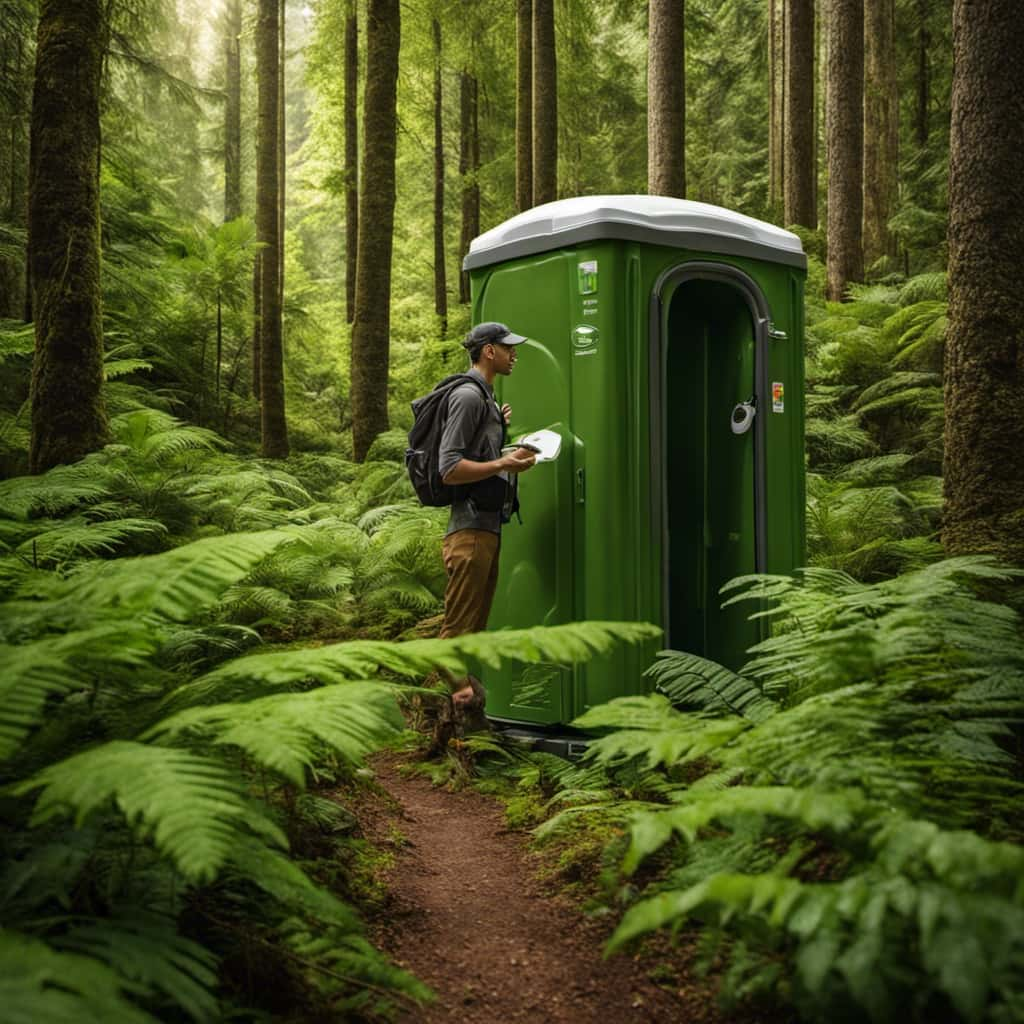
Fortunately, there are recycling options available for toilet paper rolls that can help mitigate their environmental impact. Many communities offer recycling programs that accept cardboard, including toilet paper rolls. By participating in these programs, toilet paper rolls can be transformed into new products, reducing the need for raw materials and saving energy.
Additionally, for those looking for biodegradable alternatives, there are eco-friendly toilet paper options available that are made from recycled materials or sustainably sourced fibers.
Transitioning into the subsequent section, it’s also important to consider the potential plumbing risks associated with flushing toilet paper rolls.
Plumbing Risks
Flushing toilet paper rolls can pose potential risks to our plumbing systems. It’s important to be aware of these risks and to use proper disposal methods to prevent any damage. Here are some key points to consider:

- Blockages: Toilet paper rolls aren’t designed to break down easily in water, unlike regular toilet paper. This can lead to blockages in the pipes, causing backups and potential damage.
- Clogs: When toilet paper rolls get stuck in the pipes, they can create clogs that prevent proper water flow. This can result in toilets not flushing properly or even overflowing.
- Damage to pipes: The hard cardboard material of toilet paper rolls can cause damage to the pipes, especially if they get lodged in narrow sections. This can lead to leaks and the need for costly repairs.
- Sewage backups: When toilet paper rolls clog the pipes, it can cause sewage to back up into your home. This poses health hazards and requires immediate professional assistance.
- Proper disposal methods: To avoid these risks, it’s recommended to dispose of toilet paper rolls in the trash rather than flushing them. This ensures that they don’t cause any harm to your plumbing system.
Municipal Sewage Systems
While toilet paper rolls pose risks to our plumbing systems, it’s important to consider their impact on municipal sewage systems as well.
Municipal sewage systems are responsible for collecting and treating wastewater from homes, businesses, and other establishments.
When toilet paper rolls are flushed down the toilet, they can cause pipe blockages within the sewage system. These blockages can lead to backups and overflows, resulting in potential health hazards and environmental contamination.
Proper wastewater treatment is essential to remove contaminants and ensure the safe disposal of sewage. However, when toilet paper rolls enter the sewage system, they can interfere with the treatment process and increase the risk of system failures.
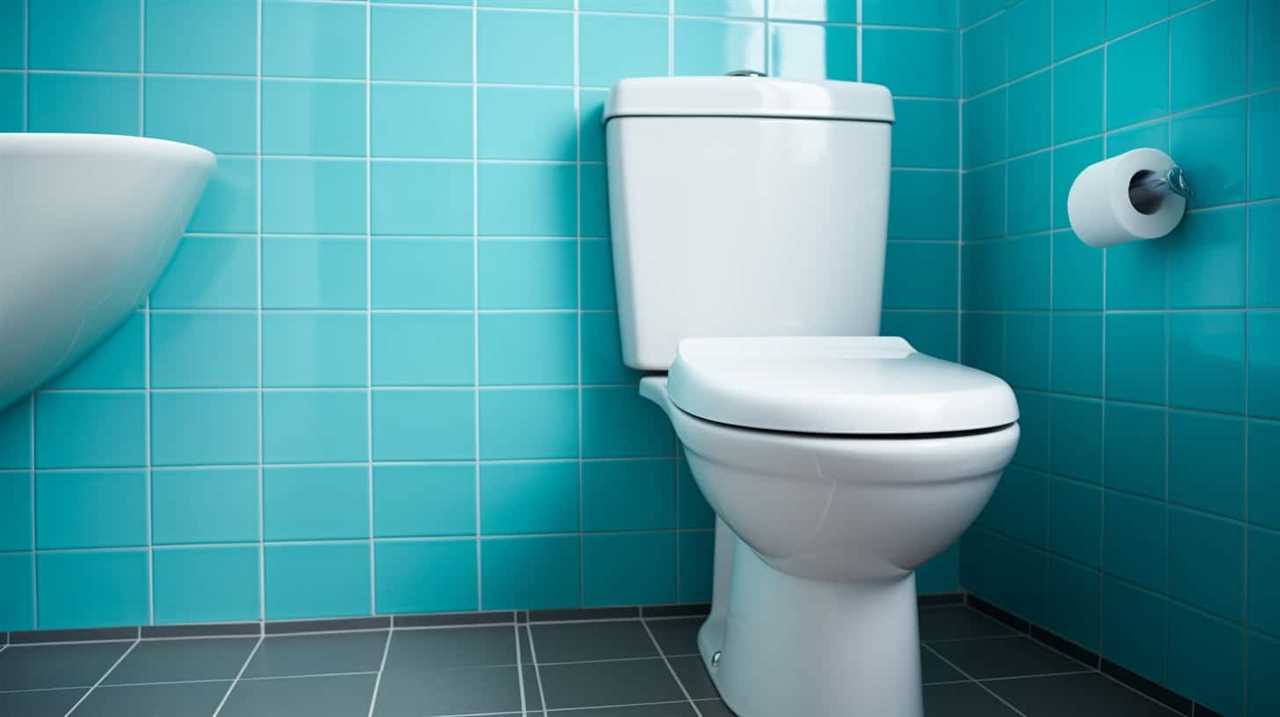
Therefore, it’s crucial to dispose of toilet paper rolls in the appropriate waste receptacles to prevent pipe blockages and maintain the efficiency of municipal sewage systems.
Alternative Disposal Methods
When considering the safe disposal of toilet paper rolls, it’s important to explore alternative methods that minimize the risk of pipe blockages in sewage systems. Here are some options to consider:
- Composting: One environmentally friendly way to dispose of toilet paper rolls is by composting. Simply tear the rolls into smaller pieces and add them to your compost pile. Over time, they’ll break down and contribute to nutrient-rich compost that can be used in your garden.
- Recycling: Many toilet paper rolls are now made from biodegradable materials, such as recycled paper or bamboo. Check the packaging to ensure it’s labeled as biodegradable. These rolls can be recycled with other paper products, reducing waste and minimizing the impact on the environment.
- Reuse: Get creative and find ways to reuse toilet paper rolls. They can be used for arts and crafts projects, organizing cables, or even as seedling pots for gardening.
- Upcycling: Transform toilet paper rolls into useful items. With a little creativity, they can be turned into bird feeders, napkin rings, or even small organizers for pens and pencils.
- Proper disposal: If none of the above options are feasible, it’s important to dispose of toilet paper rolls in the regular garbage bin. This will prevent any potential issues with sewage systems and ensure proper waste management.
Conclusion
To wrap up our exploration of alternative disposal methods for toilet paper rolls, let’s consider the importance of making conscious choices for a more sustainable future.
Proper waste management is crucial in maintaining a hygienic environment and reducing the strain on our sanitation systems. While toilet paper rolls are generally safe to flush, it’s essential to remember that they can contribute to clogs and blockages if not disposed of properly.
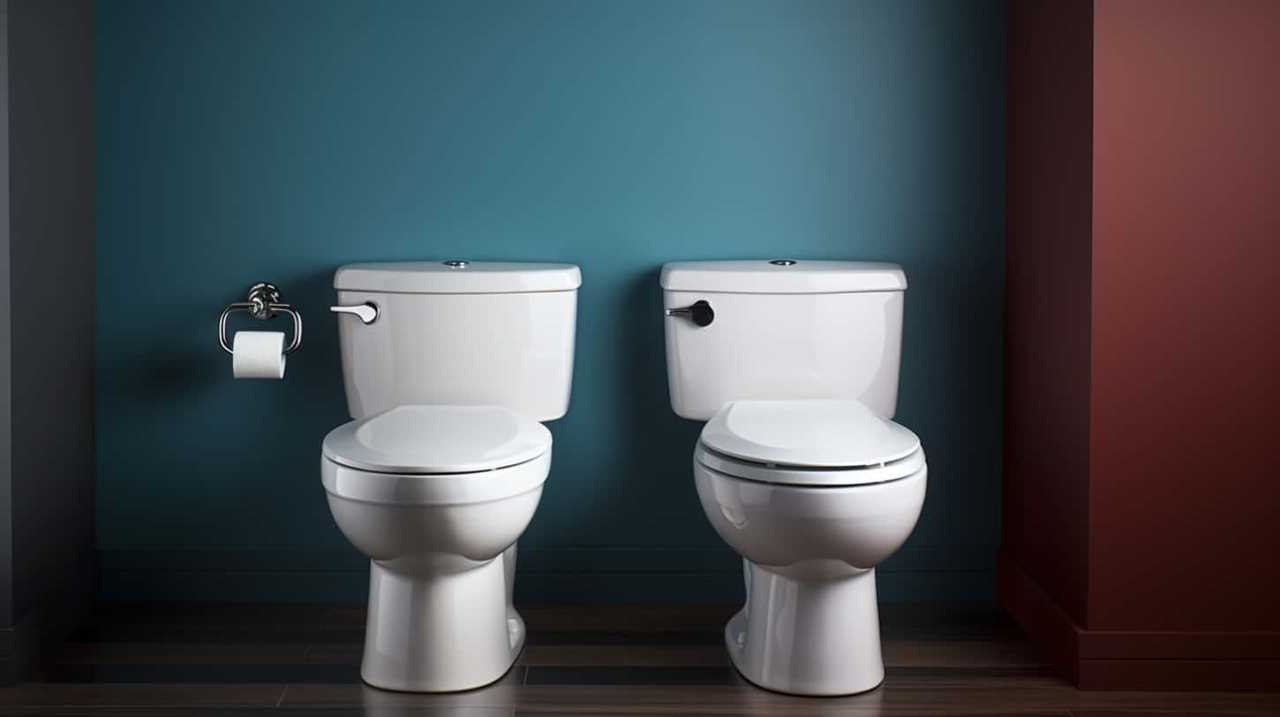
By opting for more eco-friendly alternatives, such as recycling or composting, we can minimize the environmental impact of our waste.
Additionally, it’s crucial to be mindful of hygiene concerns when handling toilet paper rolls, especially during times of illness or when dealing with potentially hazardous waste.
Frequently Asked Questions
What Are the Potential Health Risks Associated With Flushing Toilet Paper Rolls Down the Toilet?
Flushing toilet paper rolls can pose potential health risks due to clogging pipes and causing sewage backups. Additionally, the environmental impact is negative as it contributes to waste. Alternatives to flushing rolls include proper disposal in trash bins.
Can Toilet Paper Rolls Cause Blockages in the Plumbing System?
Toilet paper rolls can potentially cause blockages in the plumbing system, leading to potential plumbing issues and an increased environmental impact. It’s important to dispose of them properly to avoid these complications.
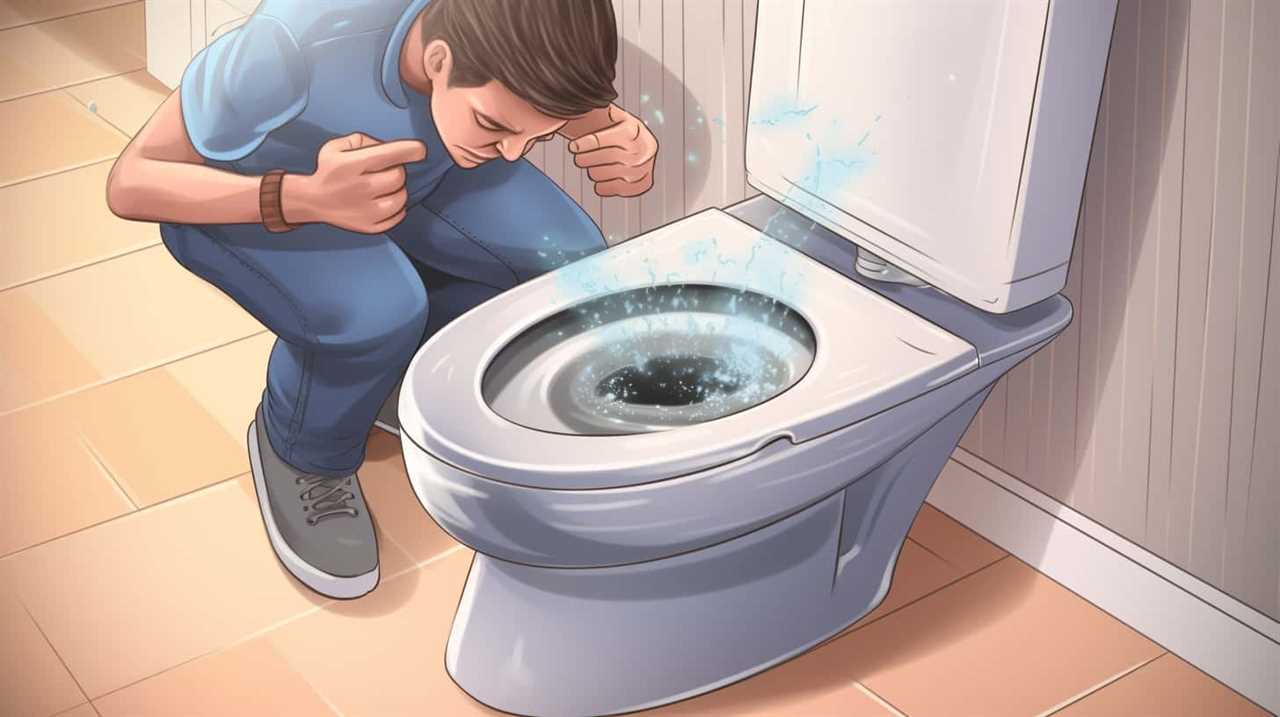
Are There Any Specific Toilet Paper Roll Brands That Are Considered Safe to Flush?
Toilet paper roll brands vary in their flushability, with some specifically designed to be safe for flushing. However, it is generally recommended to avoid flushing any type of toilet paper roll. There are alternative waste disposal methods available.
Are There Any Regulations or Guidelines in Place Regarding the Disposal of Toilet Paper Rolls?
When it comes to toilet paper roll disposal, there are regulations and guidelines in place to ensure proper waste management. These rules help maintain cleanliness and prevent clogging in our plumbing systems.
Can Toilet Paper Rolls Be Recycled or Composted as an Alternative Disposal Method?
Toilet paper rolls can be recycled or composted as an alternative disposal method. Recycling benefits include reducing waste and conserving resources. Composting process involves breaking down organic materials, like paper, into nutrient-rich soil.
Conclusion
Toilet paper rolls may seem harmless, but they can wreak havoc on our environment and plumbing systems. Flushing them down the toilet can clog pipes and cause costly repairs.
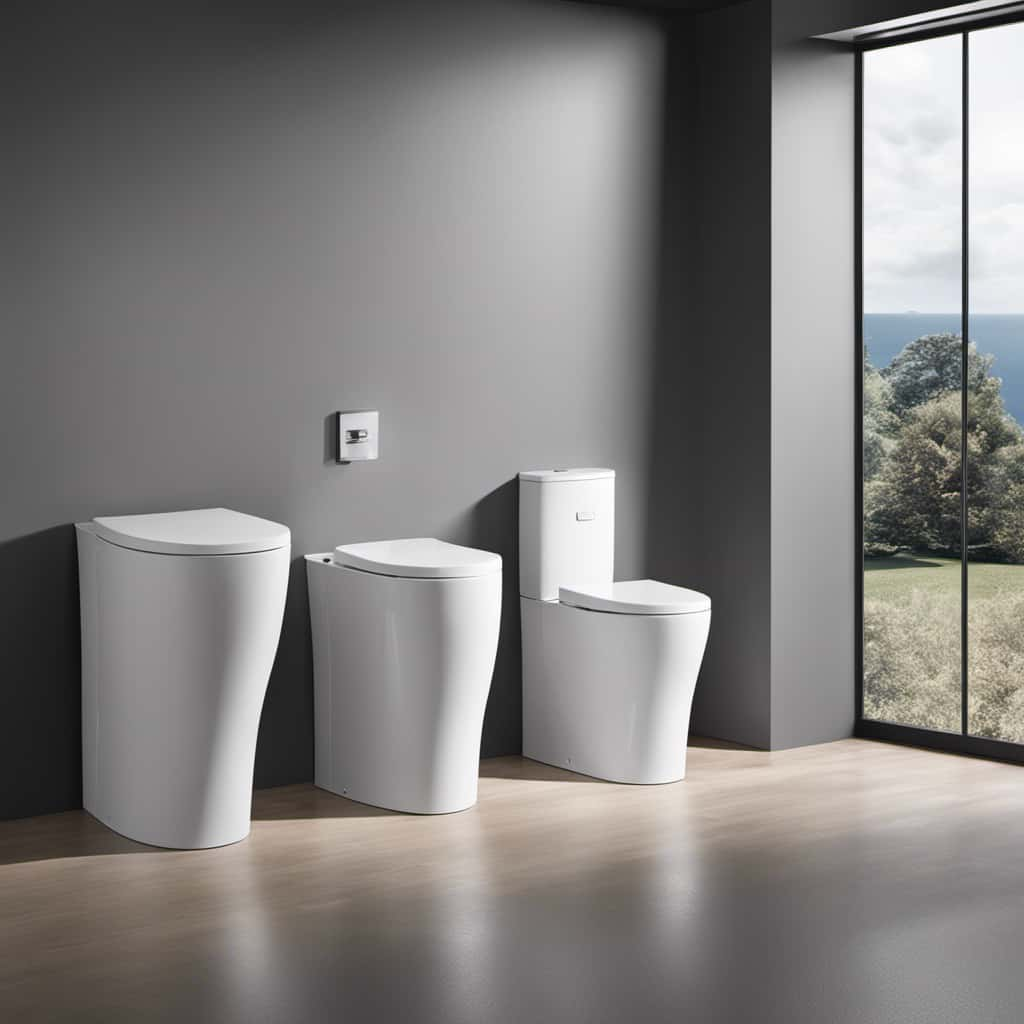
Instead, we should dispose of them in alternative ways, such as recycling or composting. Let’s give these innocent paper rolls a second chance at life, like a phoenix rising from the ashes, and protect our planet and plumbing systems from unnecessary harm.
With an impeccable eye for detail and a passion for bathroom-related, Ava leads our editorial team gracefully and precisely.
Under her guidance, Best Modern Toilet has flourished as the go-to resource for modern bathroom enthusiasts. In her free time, you might find Ava exploring antique shops and looking for vintage bathroom fixtures to add to her collection.
FAQ - Advanced Bathroom Queries
Cheapest Flushable Cat Litter

We understand your skepticism about discovering the most affordable flushable cat litter. But fret not, cat lovers! We’ve conducted thorough research and put together a detailed guide to assist you in exploring the realm of economical flushable cat litters. Dive in and uncover the secrets to finding the best deal!
From the benefits and factors to consider, to step-by-step transitioning and maintenance tips, we’ve got you covered.
Get ready to master the art of finding affordable flushable cat litter without compromising quality.
Key Takeaways
- Reduces landfill waste
- Contributes to a more sustainable future
- Offers convenience and ease of use
- Saves time and effort in cleaning the litter box
Benefits of Using Flushable Cat Litter
One of the main benefits of using flushable cat litter is that it reduces the amount of waste we’ve to dispose of. This has a significant positive environmental impact as it helps to minimize landfill waste. Traditional cat litter, which isn’t flushable, adds to the already massive amount of non-biodegradable waste in our landfills. Choosing a flushable cat litter allows us to contribute to a more sustainable future.
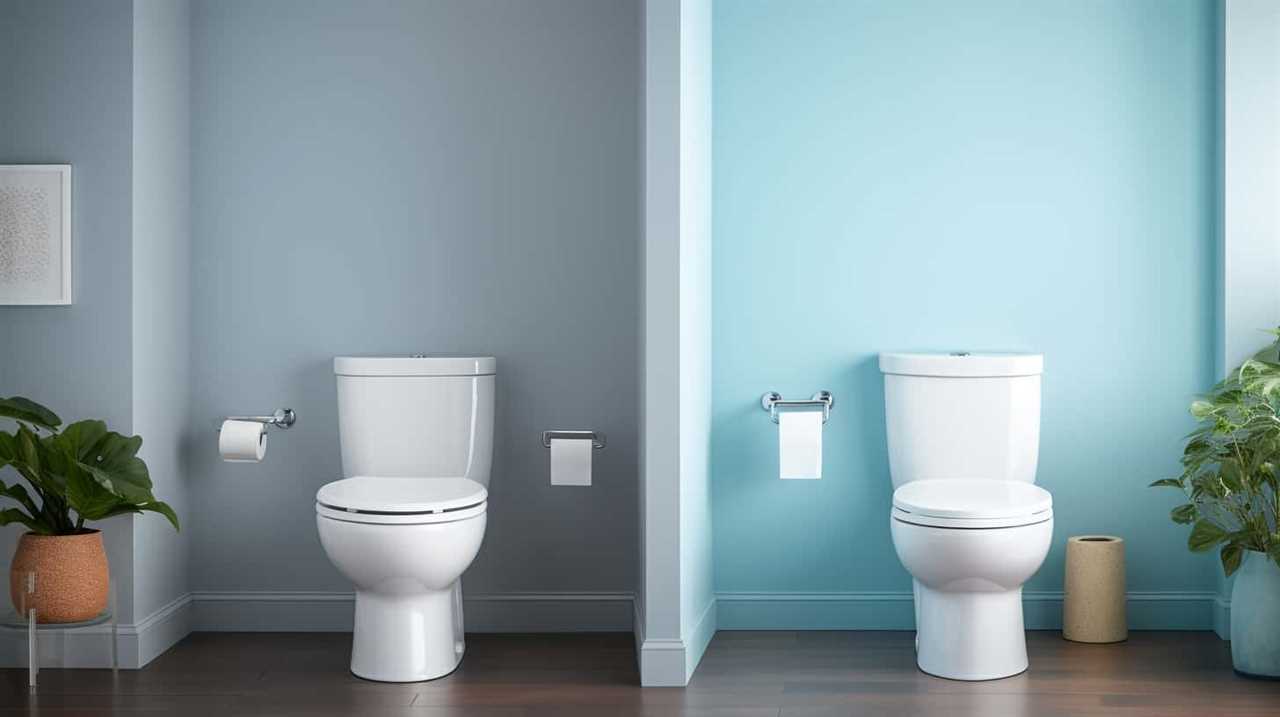
In addition to the environmental benefits, flushable cat litter also offers convenience and ease. Instead of scooping and bagging up the litter box waste, we can simply flush it down the toilet. This saves time and effort, making the process of maintaining a clean litter box much more convenient.
Considering both the environmental impact and the convenience and ease it provides, using flushable cat litter is a smart choice for cat owners. However, it’s important to consider certain factors when choosing the cheapest flushable cat litter.
Factors to Consider When Choosing the Cheapest Flushable Cat Litter
When selecting the cheapest flushable cat litter, there are several factors that we should take into consideration. Here are four key factors to keep in mind:
- Cost-effective options: Look for cat litters that offer the best value for money. Consider the price per pound or per use, as well as any discounts or bulk options available.
- Environmental impact: Opt for cat litters that are biodegradable and made from sustainable materials. This not only reduces waste but also minimizes the impact on the environment.
- Clumping ability: Choose a cat litter that forms strong clumps for easy scooping and cleaning. This ensures efficient use and reduces the frequency of litter box changes.
- Odor control: Look for cat litters that have effective odor control properties. This helps to keep your home smelling fresh and clean, even with a litter box in use.
Considering these factors will help you find the cheapest flushable cat litter that meets your budget, while also being environmentally friendly.

Now, let’s move on to a step-by-step guide on how to transition your cat to flushable litter.
Step-By-Step Guide on How to Transition Your Cat to Flushable Litter
To transition our cat to flushable litter, we found using a gradual approach to be the most effective. The transition process can be stressful for cats, so it’s important to take it slow and be patient.
Start by mixing a small amount of flushable litter with your cat’s current litter, gradually increasing the ratio over time. This allows your cat to become familiar with the new litter while still having the comfort of their old litter.
Additionally, provide alternative options for your cat, such as a separate litter box with their old litter, to ease the transition. Observe your cat’s behavior and adjust the transition pace accordingly.
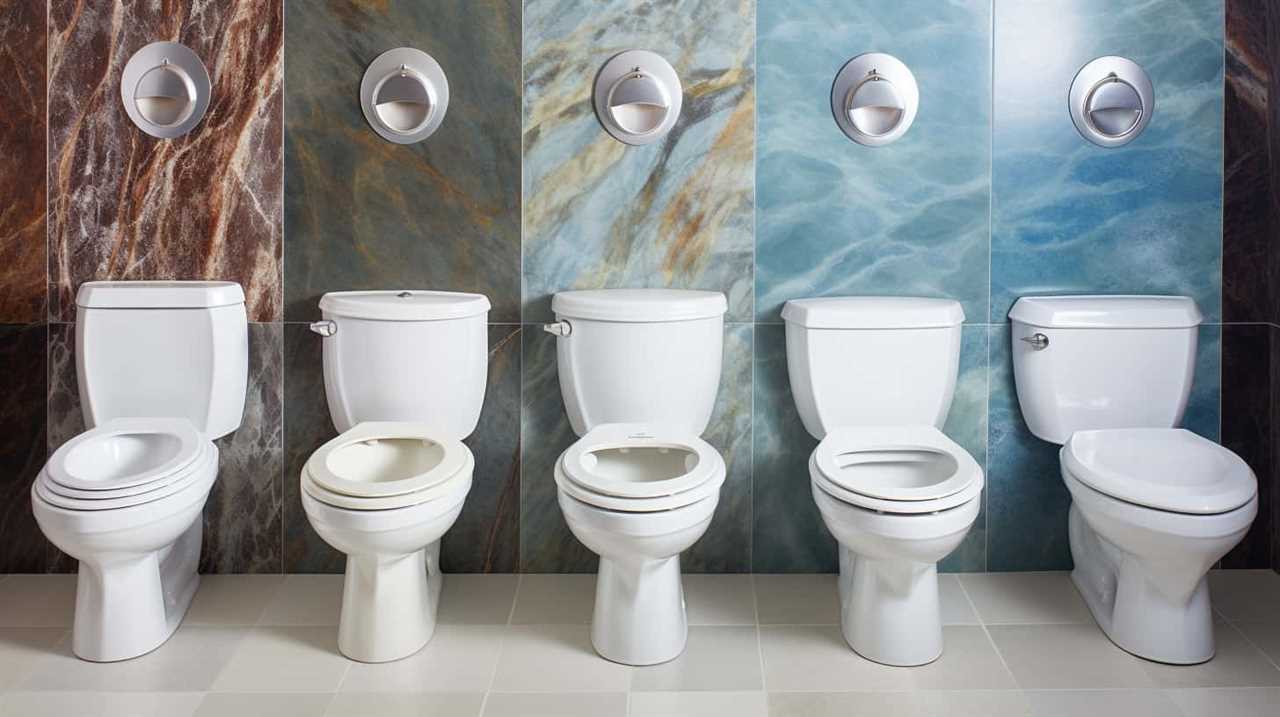
Remember to praise and reward your cat for using the flushable litter to reinforce positive associations. With time and patience, your cat will successfully transition to flushable litter.
Tips for Maintaining a Clean and Odor-Free Litter Box With Flushable Cat Litter
To maintain a clean and odor-free litter box with flushable cat litter, we recommend implementing a regular scooping routine. Here are some tips for reducing litter tracking and properly disposing of flushable cat litter:
- Place a litter mat or tray outside the litter box to catch any litter that may stick to your cat’s paws. This will help prevent it from being tracked around your home.
- Use a litter box with high sides or a covered litter box to contain any litter that may be kicked out during your cat’s digging and burying.
- Scoop the litter box at least once a day to remove any waste and clumps. This will help prevent odor buildup and keep the litter box clean for your cat.
- When disposing of flushable cat litter, make sure to follow the manufacturer’s instructions. Some brands can be safely flushed down the toilet, while others may require bagging and disposing of in the trash.
By following these tips, you can maintain a clean and odor-free litter box with flushable cat litter.
Now, let’s move on to the next section where we’ll provide reviews and recommendations for the top affordable flushable cat litters.
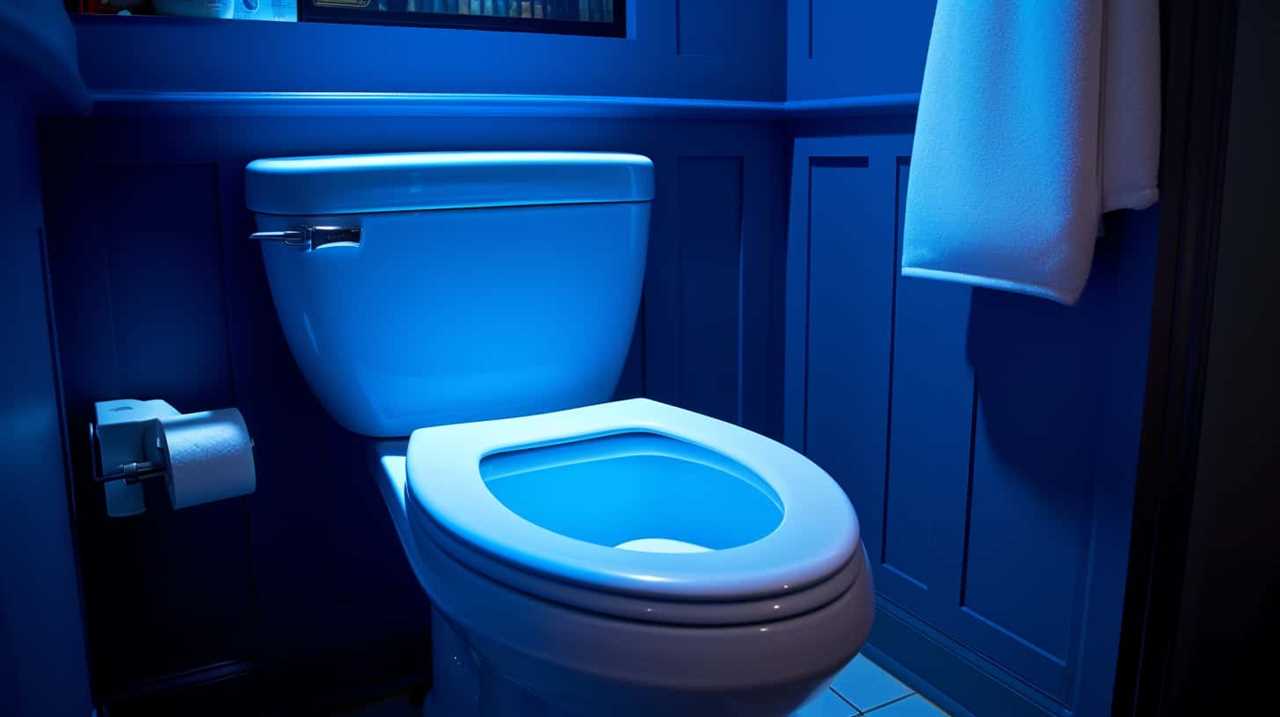
Reviews and Recommendations for the Top Affordable Flushable Cat Litters
Now, let’s dive into our reviews and recommendations for the top affordable flushable cat litters.
When considering flushable cat litters, it’s important to evaluate their environmental impact. The advantage of flushable cat litter lies in its ability to be safely disposed of through the toilet, reducing waste in landfills. However, it’s crucial to choose a litter made from biodegradable materials to ensure minimal impact on the environment.
Additionally, when comparing the cost effectiveness of flushable cat litter with traditional options, it’s essential to consider factors such as lifespan and frequency of litter changes. While flushable cat litter may initially seem more expensive, it can be cost-effective in the long run due to its longer lifespan and reduced waste management costs.
Frequently Asked Questions
Can Flushable Cat Litter Be Used in All Types of Litter Boxes?
Yes, flushable cat litter can be used in all types of litter boxes. However, it is important to consider the pros and cons of using flushable cat litter alternatives before making a decision.

Is Flushable Cat Litter Safe for Septic Systems?
Flushable cat litter may be convenient, but is it safe for septic systems? While it is touted as eco-friendly, the pros and cons should be considered. Is flushable cat litter safe for the environment?
How Often Should I Flush the Litter When Using Flushable Cat Litter?
When using flushable cat litter, we flush it every time our cat uses the litter box. This ensures cleanliness and prevents odors. However, there are alternatives to flushable cat litter that may be more cost-effective.
Can I Mix Flushable Cat Litter With Regular Cat Litter?
When considering mixing cat litter, it’s important to note that flushable and regular litter have different compositions and functionalities. It’s best to avoid mixing them to maintain the effectiveness of flushable litter and explore alternatives to flushable litter instead.
Are There Any Specific Brands of Flushable Cat Litter That Are More Environmentally Friendly?
There are alternative eco-friendly options available when it comes to flushable cat litter. Using flushable litter has several benefits, such as reducing waste and being more environmentally friendly compared to traditional cat litter.
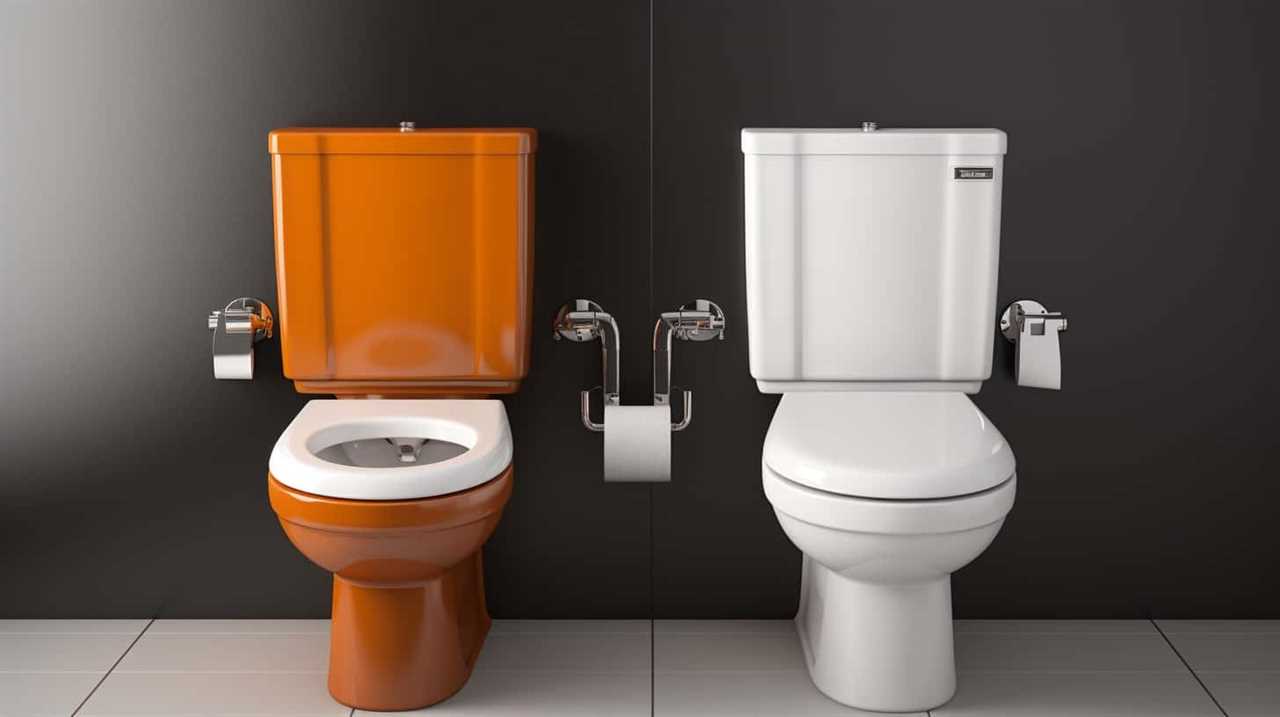
Conclusion
In conclusion, finding the cheapest flushable cat litter can be a game-changer for both you and your feline friend. By considering factors such as cost, effectiveness, and environmental impact, you can make an informed decision.
Transitioning your cat to flushable litter may require patience, but it’s worth it in the long run. With proper maintenance, you can keep your litter box clean and odor-free.
So why not give it a try and experience the convenience and efficiency of flushable cat litter? It’s like finding a hidden treasure for both you and your cat!
With an impeccable eye for detail and a passion for bathroom-related, Ava leads our editorial team gracefully and precisely.
Under her guidance, Best Modern Toilet has flourished as the go-to resource for modern bathroom enthusiasts. In her free time, you might find Ava exploring antique shops and looking for vintage bathroom fixtures to add to her collection.
FAQ - Advanced Bathroom Queries
Can You Force Flush a Toilet
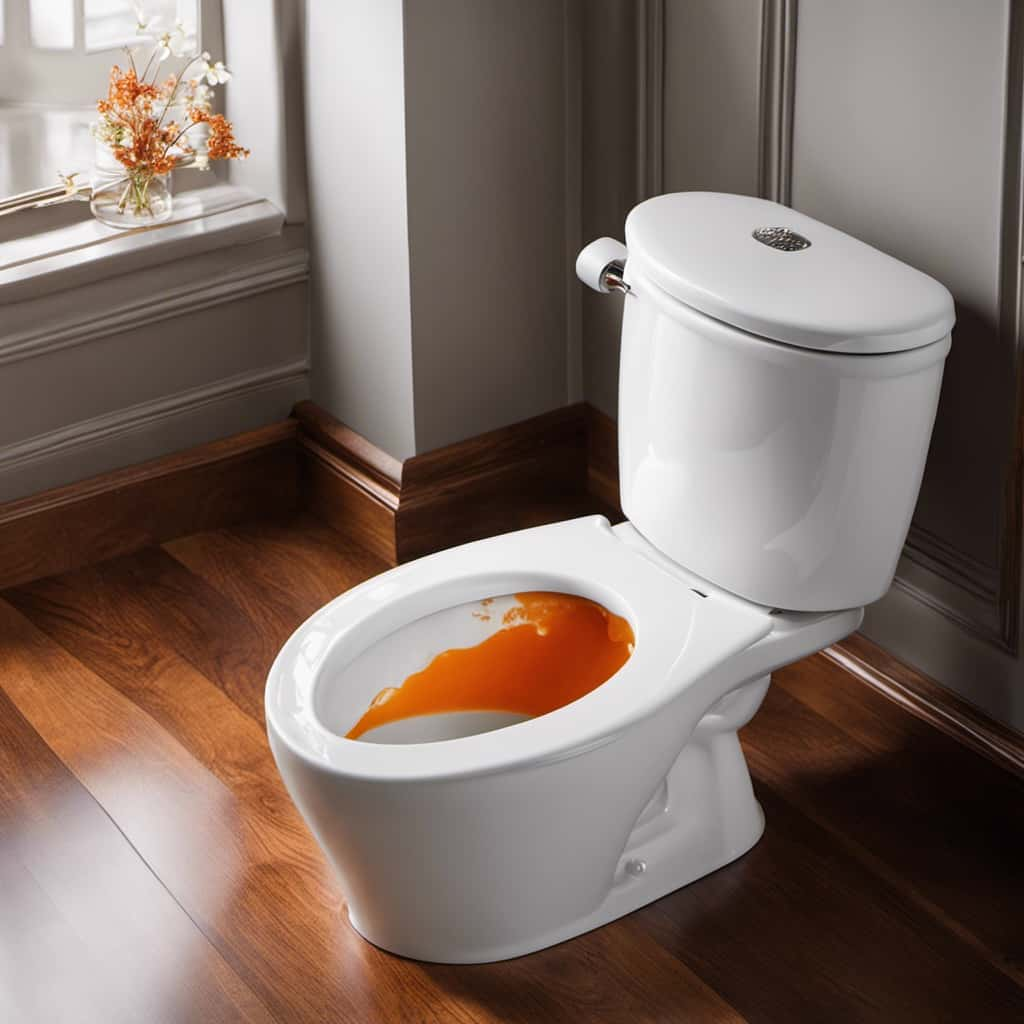
Yes, you can unleash the power of a force flush on your toilet! Have you ever thought about it before? We’re here to let you know that it is possible!
In this article, we will delve into the mechanics of a toilet flush and explain when a force flush is necessary.
We’ll also provide you with a step-by-step guide and tips for a successful force flush.
So, buckle up and get ready to master the art of force flushing your toilet!
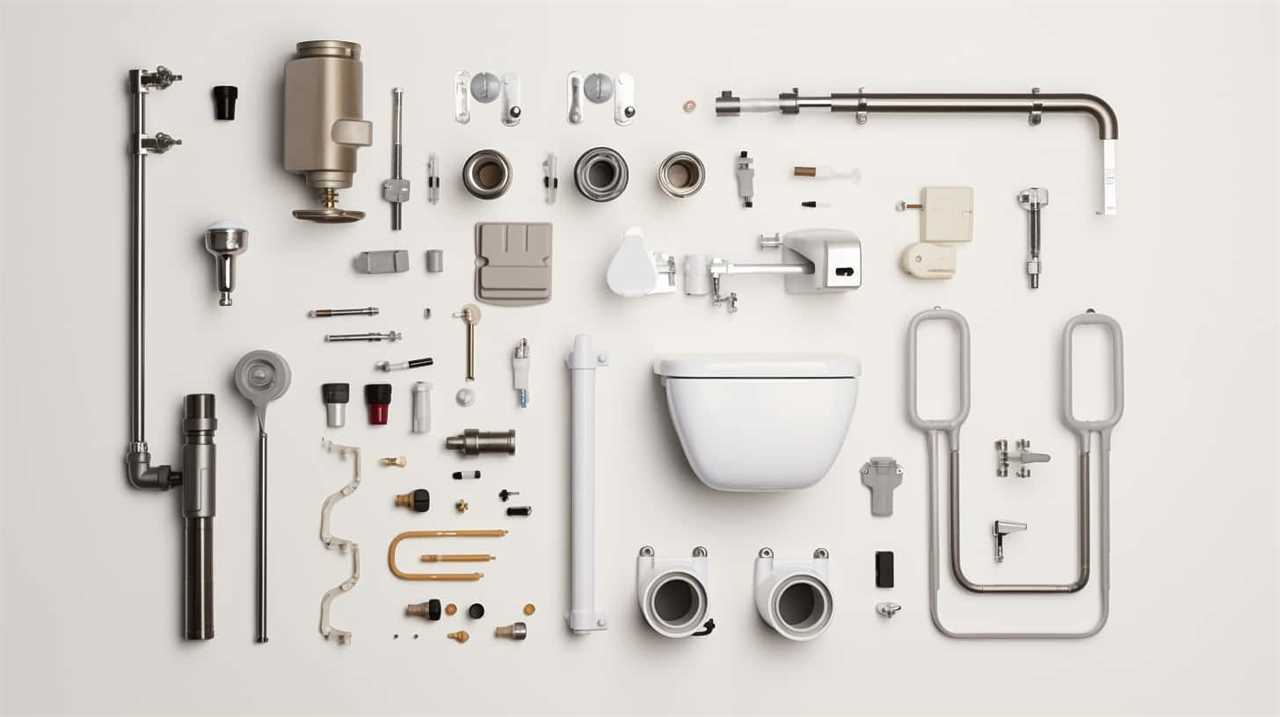
Key Takeaways
- The flush lever lifts the flapper, allowing water to rush into the bowl.
- Troubleshooting weak flushes, inconsistent water levels, or clogs involves checking the water supply, flush valve, and tank components.
- If conventional methods fail to unclog a toilet, calling a professional plumber may be necessary.
- Tools and equipment for force flushing a toilet include a plunger, high-pressure water source, rubber gloves, towels, and a bucket or pail.
Understanding the Mechanics of a Toilet Flush
To understand the mechanics of a toilet flush, we’ll delve into the workings of its water flow and pressure.
The toilet flush mechanism is a complex system that relies on the proper functioning of several components. When the flush lever is pressed, it lifts the flapper, allowing water from the tank to rush into the bowl. This creates a strong force that pushes waste down the drain.
However, if you’re experiencing issues with your toilet flush, troubleshooting the problem can be a bit challenging. Common issues include weak flushes, inconsistent water levels, or clogs.
It’s important to check the water supply, the flush valve, and the tank components for any signs of damage or malfunction. By understanding the inner workings of the toilet flush mechanism, you can effectively troubleshoot and fix any issues that arise.

Identifying When a Force Flush Is Necessary
When identifying the instances in which a force flush is necessary, we must consider the factors that may contribute to a weak or ineffective flush. Signs of a clogged toilet include water that rises to the rim or drains slowly, gurgling sounds, or a foul odor. If these signs persist despite attempts to unclog the toilet using a plunger or other methods, it may be time to call a professional plumber.
A professional plumber has the expertise and tools to effectively diagnose and resolve complex clogs that can’t be cleared through conventional means. Knowing when to call a professional plumber can prevent further damage to your plumbing system and ensure a proper force flush is performed if necessary.
With an understanding of when a force flush is needed, let’s now explore the tools and equipment required for this process.
Tools and Equipment for Force Flushing a Toilet
We will need specific tools and equipment to successfully force flush a toilet. Here are the essential items you’ll need:
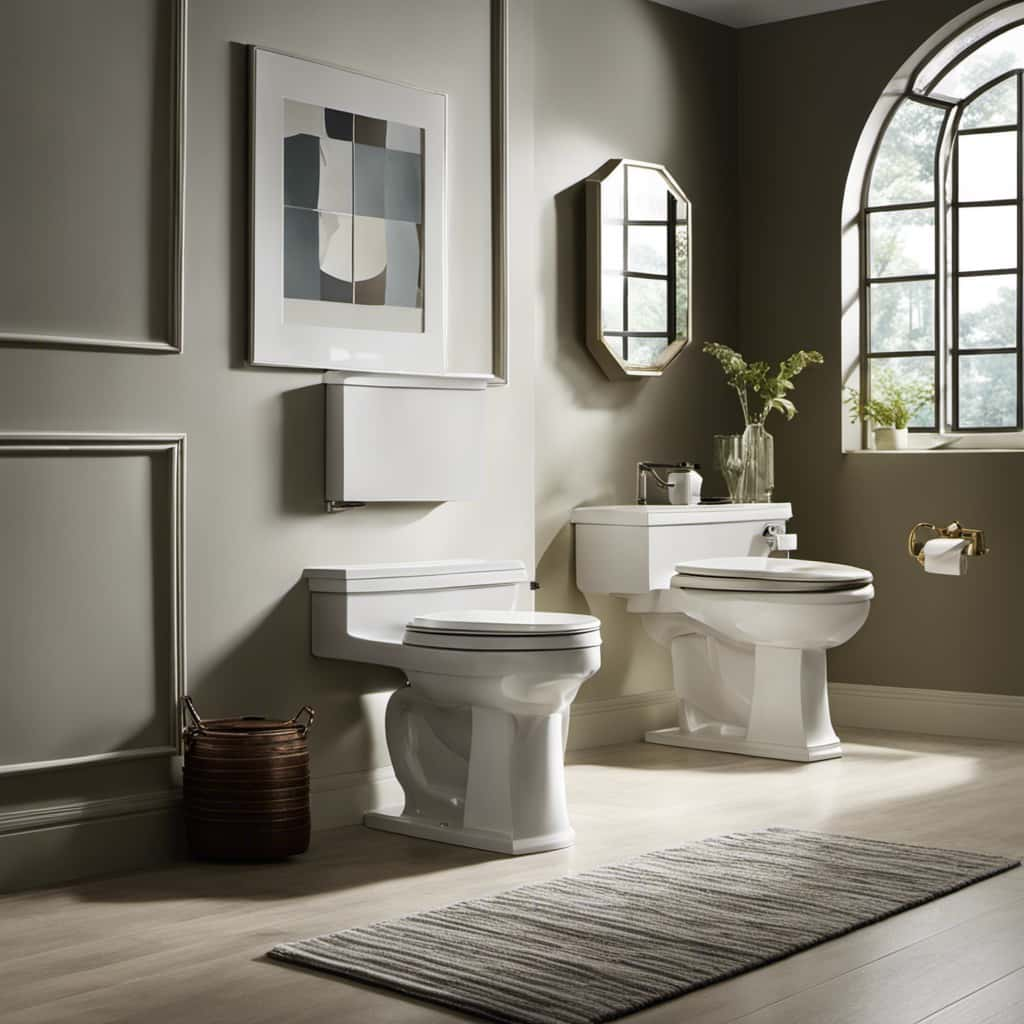
- Plunger: A plunger is a basic tool used to create pressure and force water through the drain. Choose a plunger with a flange or extension at the bottom for better seal and suction.
- High-pressure water source: To generate a forceful flush, you’ll need a high-pressure water source. This can be a handheld bidet sprayer, a pressure washer, or even a garden hose with a nozzle attachment.
- Rubber gloves: Protect your hands from any potential mess or bacteria by wearing rubber gloves. This will also provide a better grip on the plunger.
- Towels: Keep towels handy to clean up any spills or splashes that may occur during the force flushing process.
- Bucket or pail: Have a bucket or pail nearby to collect any excess water that may overflow during the force flushing.
Step-by-Step Guide to Force Flushing a Toilet
To successfully force flush a toilet, we will need to follow a step-by-step guide. Below is a table that outlines the process, along with some alternative methods for unclogging toilets.
| Step | Action |
|---|---|
| 1 | Put on protective gloves and eyewear. |
| 2 | Check for common toilet problems like a clogged trap or blocked vent pipe. |
| 3 | If the toilet is not clogged, try a plunger to force water down the drain. |
| 4 | If the plunger doesn’t work, try using a toilet auger to remove the blockage. |
| 5 | If all else fails, use a force flush by pouring a bucket of water into the toilet bowl. |
By following these steps, you can effectively force flush a toilet and resolve common toilet problems. In the next section, we will discuss some tips and precautions for a successful force flush.
Now, let’s move on to the tips and precautions for a successful force flush.
Tips and Precautions for a Successful Force Flush
Now, let’s explore some essential tips and precautions to ensure a successful force flush of the toilet.
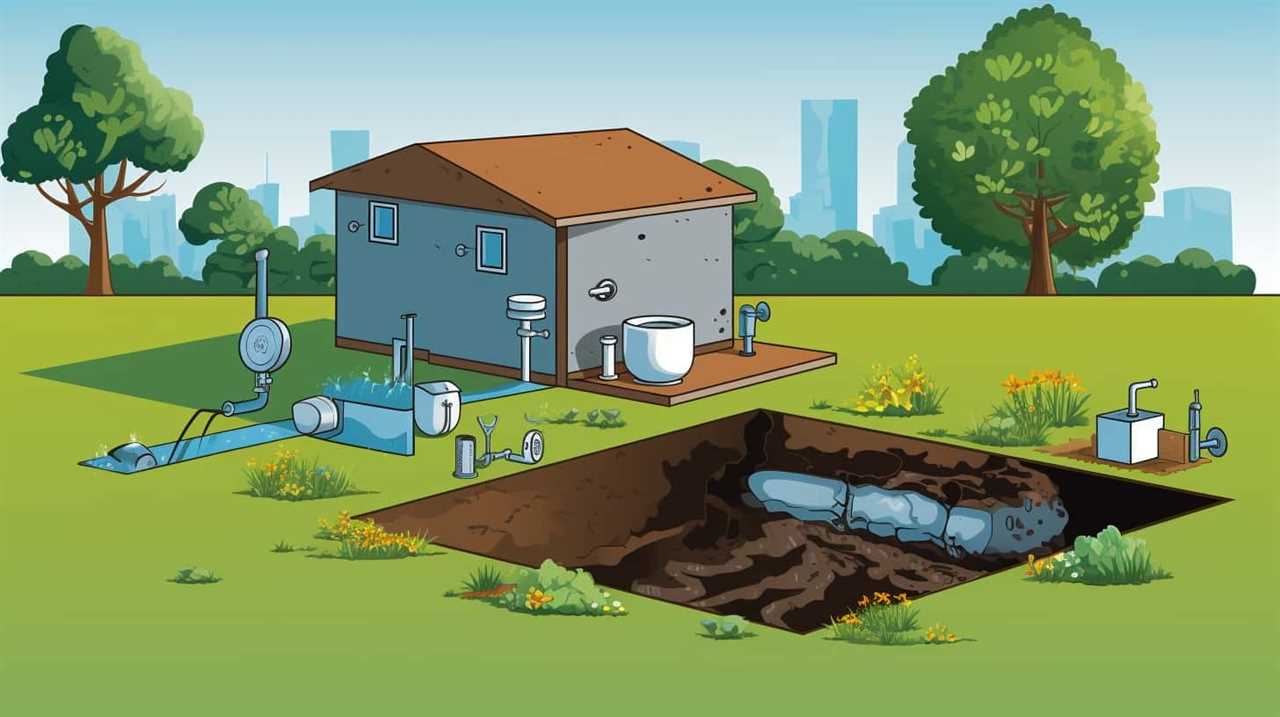
Here are some tips to prevent clogs and troubleshoot common issues:
- Use a plunger: A plunger is an effective tool for force flushing a toilet. Ensure a tight seal around the drain and use vigorous up-and-down motions to create suction and dislodge any blockage.
- Apply lubricant: If the plunger doesn’t work, try applying a small amount of lubricant, such as dish soap or petroleum jelly, around the rim of the plunger. This can improve suction and increase the chances of a successful force flush.
- Avoid excessive force: While force flushing is necessary in some cases, it’s important to avoid using excessive force as it can damage the toilet or pipes. Apply firm pressure, but be cautious.
- Check the water level: Before attempting a force flush, ensure that the water level in the toilet bowl isn’t too high. If it is, remove some water using a bucket or cup to prevent overflow.
- Call a professional: If force flushing doesn’t resolve the issue or if you encounter any other problems, it’s best to call a professional plumber. They have the expertise to handle complex toilet issues.
Frequently Asked Questions
How Long Does It Typically Take to Force Flush a Toilet?
Typically, it takes a few minutes to force flush a toilet. Common mistakes when trying to force flush include using excessive force, not checking the water level, or ignoring clogs. To troubleshoot a toilet that won’t force flush, check the water level, inspect for clogs, and ensure the flapper is functioning properly.
Can Force Flushing a Toilet Cause Any Damage to the Plumbing System?
Force flushing a toilet without proper knowledge or tools can potentially cause significant damage to the plumbing system. To prevent this, it’s crucial to understand the risks involved and take necessary precautions to ensure the integrity of the plumbing is maintained.
Is It Possible to Force Flush a Toilet Without Using Any Tools or Equipment?
Yes, you can force flush a toilet without using any tools or equipment. Some natural methods for unclogging toilets include using hot water, vinegar and baking soda, or a plunger. These DIY solutions can help resolve toilet flushing issues.
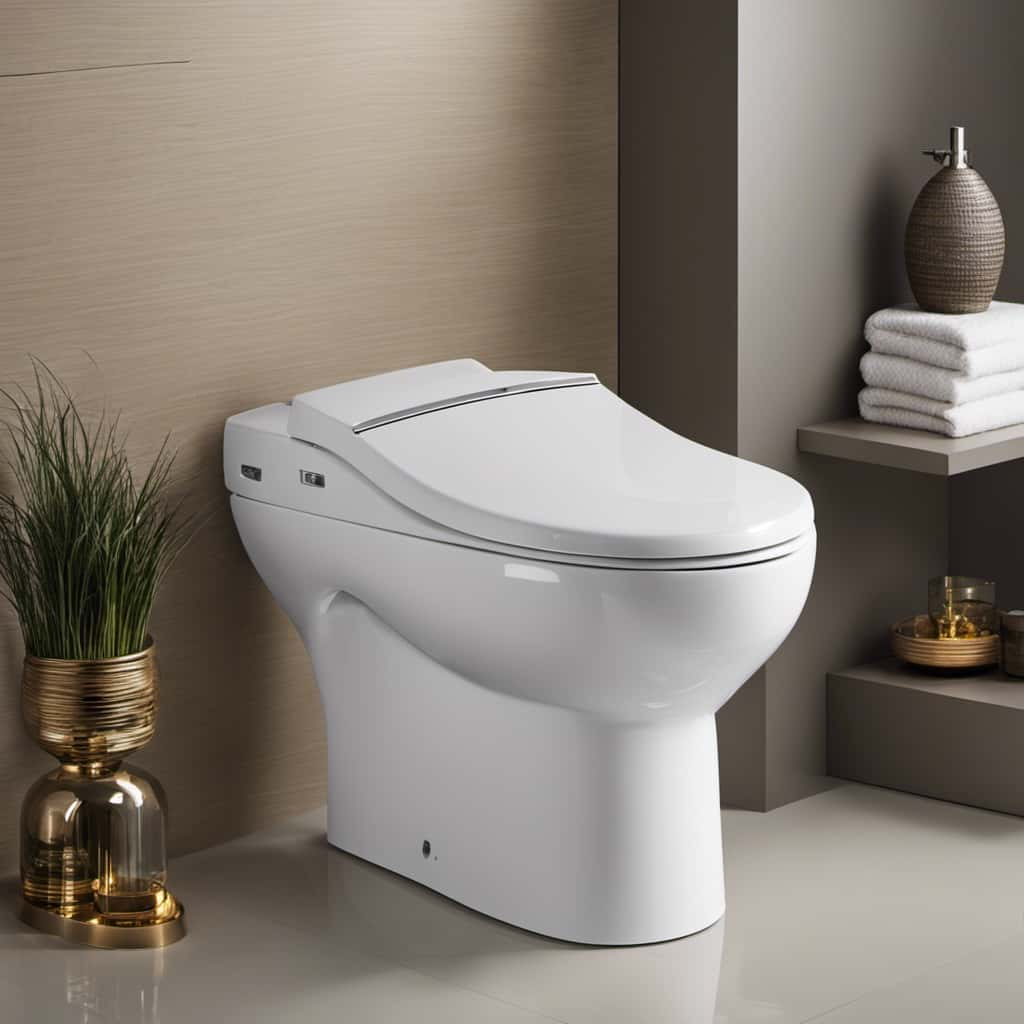
What Are Some Common Signs That Indicate a Force Flush Might Be Necessary?
Common signs that indicate a force flush might be necessary include water backing up, slow draining, and repeated clogs. To prevent clogs and avoid force flushing, proper maintenance and avoiding flushing non-flushable items are essential.
Are There Any Alternative Methods to Force Flushing a Toilet if the Recommended Tools Are Not Available?
Yes, there are alternative methods to force flush a toilet if the recommended tools are not available. DIY techniques such as pouring hot water or using a plunger can help resolve the issue.
Conclusion
In conclusion, understanding the mechanics of a toilet flush is essential for identifying when a force flush is necessary. By following a step-by-step guide and using the right tools and equipment, you can successfully force flush a toilet.
Remember to exercise caution and follow the tips provided for a smooth and efficient flush. With these techniques, you’ll be able to unclog even the most stubborn toilets with the force of a thousand storms!
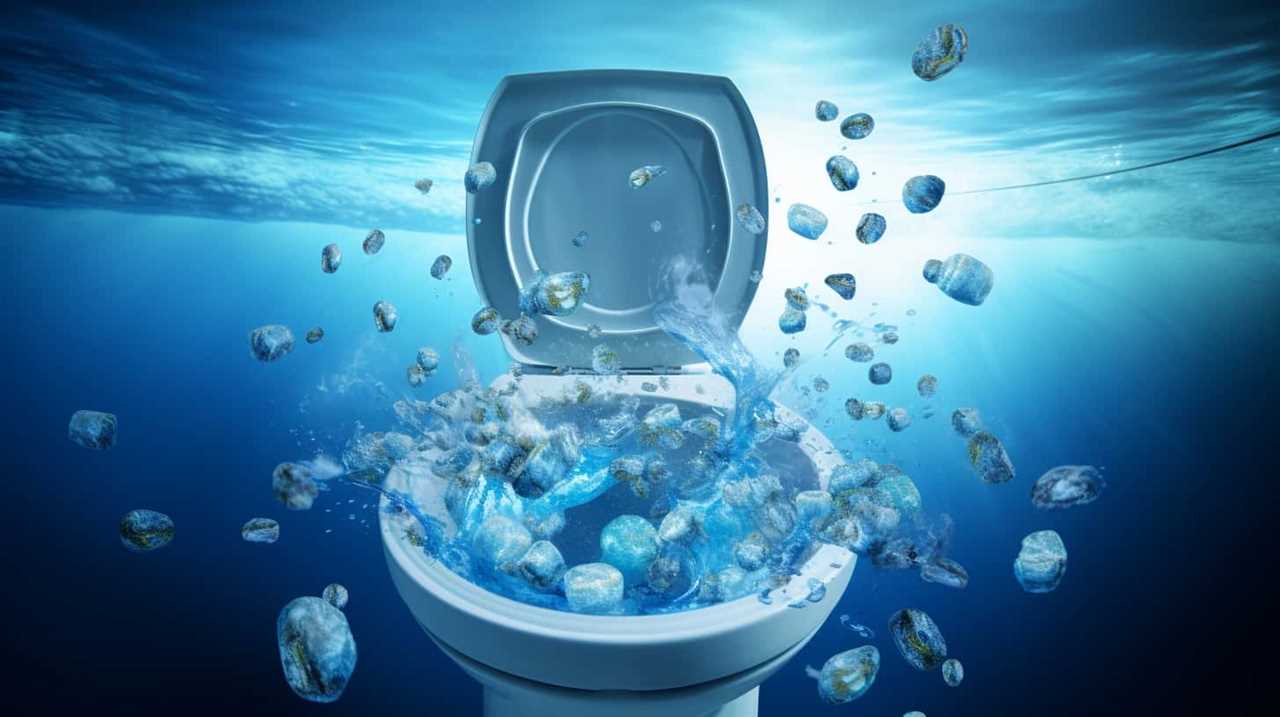
With an impeccable eye for detail and a passion for bathroom-related, Ava leads our editorial team gracefully and precisely.
Under her guidance, Best Modern Toilet has flourished as the go-to resource for modern bathroom enthusiasts. In her free time, you might find Ava exploring antique shops and looking for vintage bathroom fixtures to add to her collection.
-

 FAQ - Advanced Bathroom Queries3 months ago
FAQ - Advanced Bathroom Queries3 months agoWhat Happens if You Sit on the Toilet Too Long
-

 FAQ - Advanced Bathroom Queries3 months ago
FAQ - Advanced Bathroom Queries3 months agoWhy Is My Toilet so Loud When Refilling
-

 FAQ - Advanced Bathroom Queries3 months ago
FAQ - Advanced Bathroom Queries3 months agoWhat Happens When You Put Baking Soda in Your Toilet
-

 Guides3 months ago
Guides3 months agoHow to Remove Crystallized Urine From Toilet Bowl
-

 Guides3 months ago
Guides3 months agoHow to Use Green Gobbler in Toilet
-
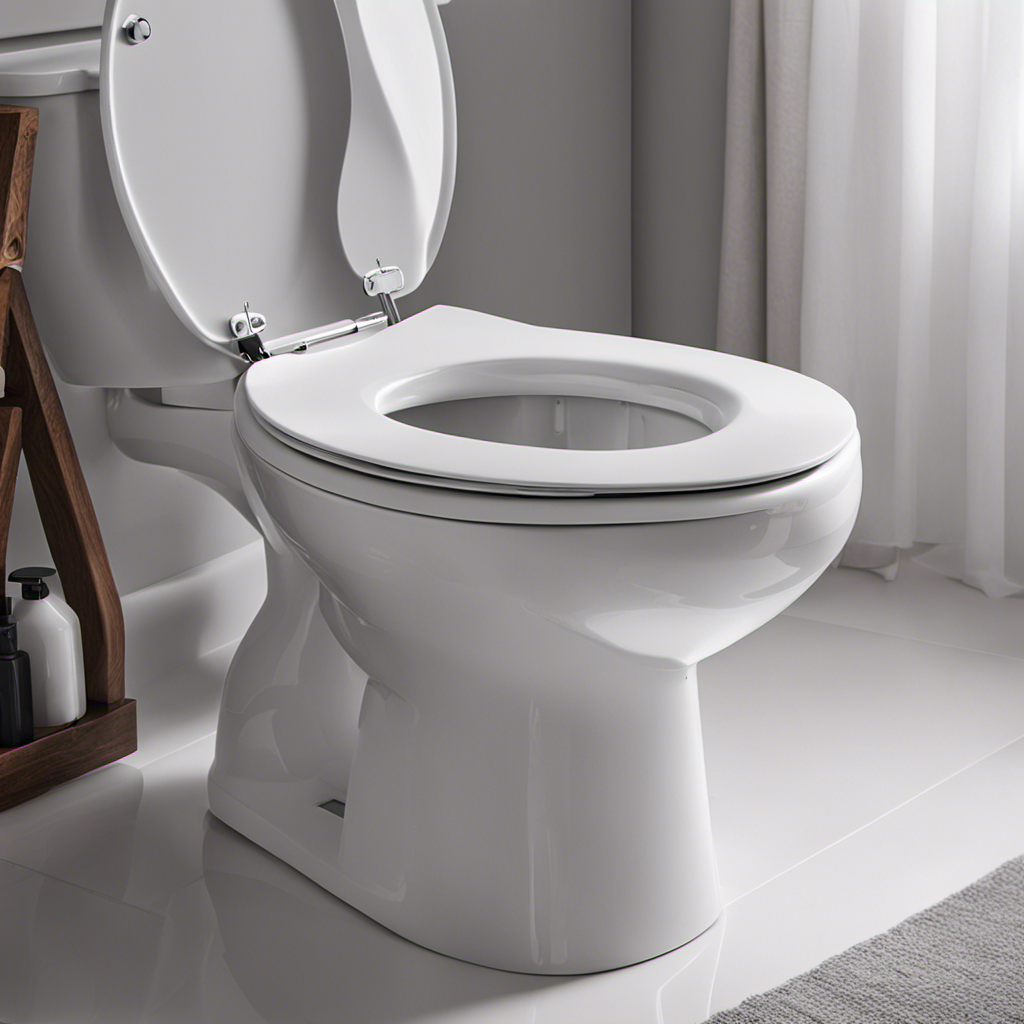
 Guides3 months ago
Guides3 months agoHow to Fix a Soft Close Toilet Seat
-

 FAQ - Advanced Bathroom Queries3 months ago
FAQ - Advanced Bathroom Queries3 months agoWhat Size Pipe for Toilet Drain
-

 Guides3 months ago
Guides3 months agoA Toilet Is Cycling on and off and the Tank Is Refilling Every Few Minutes What Should I Check First





















